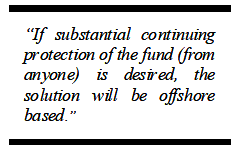UNIFORM GIFTS TO MINORS ACCOUNTS – PROTECTING THEM FROM YOUR CHILD, YOUR CREDITORS, AND OTHERS

2020 – OUR 28th YEAR OF PUBLICATION!
Volume XXVII • Number 2 • July / August 2020
INTRODUCTION.
Parents and other relatives often establish financial accounts for minor children as a means of making a “controllable” gift to a minor. This is accomplished by establishing a custodial account at a financial institution for the benefit of the minor child which is usually managed by the parent (although another person could be the designated custodian). Such custodial account will be established under the state’s Uniform Transfers to Minors Act (UTMA) or Uniform Gifts to Minors Act (UGMA). CAVEAT: Depending upon the amount in the account, this arrangement can be troublesome.
DISCUSSION.
The differences between the UTMA and the UGMA relate to the types of investments which can be held in the account and the dates on which the account terminates and is turned over to the child. In general, the UGMA authorizes cash, bank accounts, stocks, bonds, and mutual funds. The UTMA broadens these holdings to include real estate and other property, including limited partnership and LLC interests.
TROUBLESOME.
Suppose that by the time the minor attains the age set forth in the state law for termination of the custodianship (as early as 18 under the UGMA and as late as 25 under the UTMA) the account has grown to a substantial sum (say, hundreds of thousands of dollars or more). Would the parent would feel comfortable having to turn over such a large sum – without any controls – to the child? What can be done to retain control of the funds beyond the statutory age for termination?
SOLUTIONS.
Depending upon the client’s goals and circumstances, the solution can be a domestic one or an offshore one. If substantial continuing protection of the fund (from anyone) is desired, the solution will be offshore based. If the goal is merely to keep control of the fund from the child, the solution can be domestic.  In either case, an “investment” in an LLC will be the answer. The subject LLC will be governed by a specialized operating agreement containing protective provisions. The identity of the members of the LLC will be determined by the circumstances.
In either case, an “investment” in an LLC will be the answer. The subject LLC will be governed by a specialized operating agreement containing protective provisions. The identity of the members of the LLC will be determined by the circumstances.
If the goal is to keep control of the assets away from the child, the LLC could be structured as a domestic member-managed LLC, typically with a parent as the 1% managing member and the custodial account as the 99% non-managing member (the domestic LLC can also be structured as a manager-managed LLC with the custodial account as the sole member).
If the goal is substantial continuing protection of the fund from everyone, the LLC will be structured as an offshore manager-managed LLC, 100% owned by the custodial account and managed by an offshore management company (such management company is operated by the personnel of an offshore trustee company).
In either case, the specialized operating agreement could provide that no member distributions can be made to any member before a certain date, and that the manager is engaged at least until that date. Other protective provisions could also be included in the operating agreement, for example, that a transfer of a member interest would not be recognized by the manager unless that transfer was wholly voluntary and approved by the manager.
SUMMARY.
In many instances it will be appropriate to implement the above-discussed additional controls and protections of the child’s custodial account. Only an experienced attorney should be retained to implement this planning.
